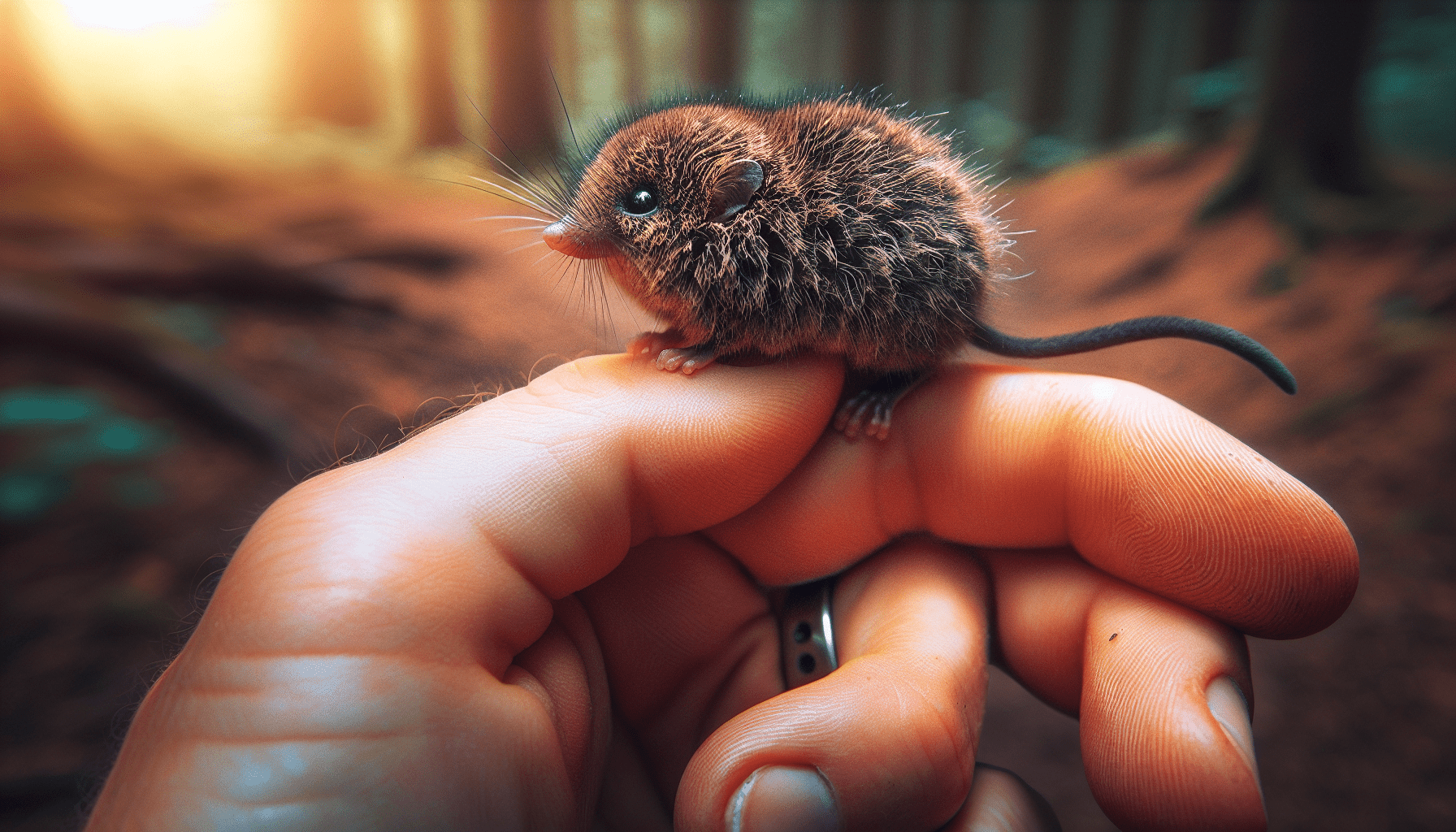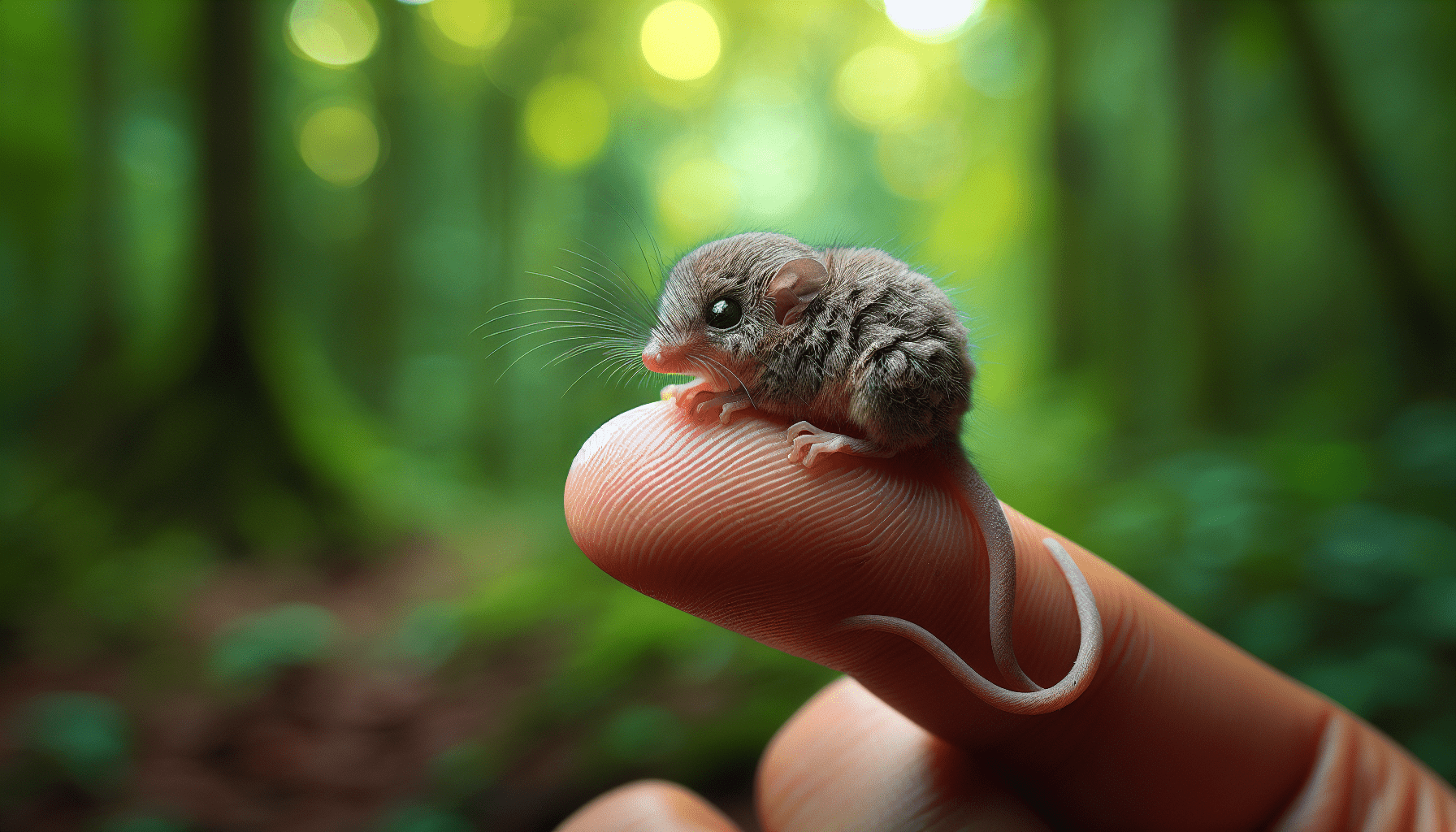Have you ever wondered about the tiniest creatures in the world that also happen to be furry? It’s easy to think of furry animals as larger pets like cats, dogs, or even rabbits. However, there’s an entire world of surprisingly small and furry creatures that are seldom talked about. Let’s venture into the enchanting and often overlooked realm of “Furry But Tiny” creatures, exploring their fascinating lives, remarkable adaptations, and unique appearances.
The Definition of Furry but Tiny
When we talk about “furry but tiny,” what exactly do we mean? These are creatures that possess fur or fur-like structures and are small in size, often fitting comfortably in the palm of your hand. Their fur might serve various purposes, from insulation to camouflage. These petite fur-bearers live in diverse habitats, ranging from underground burrows and tree canopies to ocean depths and human homes.
Why Size and Fur Matter
Size and fur play significant roles in the survival of these animals. For tiny creatures, fur can provide much-needed warmth and protection. It can also act as camouflage, helping them avoid predators. The smaller the animal, the more essential these adaptations become.
Tiny Mammals: Masters of Miniature
African Pygmy Mouse
One of the smallest mammals around, the African pygmy mouse (Mus minutoides) is tiny but full of character. Weighing just 3 to 12 grams and measuring about 30 to 80 millimeters in body length, this little rodent is perfectly adapted to its environment in sub-Saharan Africa.
Features and Adaptations
- Fur: The fur is fine and typically shades of brown, helping it blend seamlessly into its surroundings.
- Behavior: It is nocturnal, meaning it is most active at night when its small size makes it less visible to predators.
Bumblebee Bat
Also known as Kitti’s hog-nosed bat (Craseonycteris thonglongyai), the bumblebee bat is another marvel of the mammal kingdom, often cited as the smallest mammal in terms of skull size.
Features and Adaptations
- Fur: Short and fine, usually reddish-brown or grey, providing essential warmth.
- Size: It weighs about 2 grams and has a wingspan of approximately 5.7 inches.
Pygmy Jerboa
The pygmy jerboa (Salpingotulus michaelis) from the deserts of Pakistan is an endearing tiny mammal with incredibly long hind legs.
Features and Adaptations
- Fur: Soft and sandy-colored, blending into its desert environment.
- Size: Weighs less than 4 grams and measures about 1.7 inches in length.
Patagonian Opossum
The pygmy opossum family includes the Patagonian opossum (Lestodelphys halli), agraceful little animal found in South America.
Features and Adaptations
- Fur: Soft and dense, often brown or grey.
- Size: Weighs up to 55 grams and measures around 3.5 inches without the tail.

Furry Fish and Amphibians
Hairy Frogfish
While not a conventional example of “fur,” the hairy frogfish (Antennarius striatus) comes close by having hair-like appendages that mimic actual fur. It’s one of those creatures that make us rethink the boundaries of the term “furry.”
Features and Adaptations
- Fur-like structures: These appendages aid in camouflage, blending with coral reefs.
- Unique characteristics: They can change colors to blend even better with their surroundings.
Furry Frog
Less an amphibian with fur and more an interesting nomenclature, the “furry frog” (Trichobatrachus robustus) has hair-like structures on its body, especially noticeable during the breeding season.
Features and Adaptations
- Fur-like structures: Helps in oxygen absorption underwater.
- Special trait: Known for breaking its own bones to form claws when threatened.
Unusual Tiny Mammals
Etruscan Shrew
Known for its minuscule size, the Etruscan shrew (Suncus etruscus) holds the title of the smallest mammal by mass.
Features and Adaptations
- Fur: Soft and greyish-brown, providing insulation.
- Size: Weighs about 1.8 grams and measures about 1.5 to 2 inches.
Lesser Hedgehog Tenrec
Found in Madagascar, the Lesser Hedgehog Tenrec (Echinops telfairi) is an intriguing and tiny creature.
Features and Adaptations
- Fur: Short and spiky, resembling hedgehog quills.
- Size: Weighs about 200 grams and measures around 5.5 to 6.2 inches.
Tiny Marsupials: The Little Darlings of Australia
Long-tailed Planigale
One of the smallest marsupials, the Long-tailed Planigale (Planigale ingrami) is quite the miniature marvel from Australia.
Features and Adaptations
- Fur: Very fine and sparse, often a shade of brown.
- Size: About 4 to 5 grams in weight and 2 to 2.5 inches long.
Honey Possum
The Honey Possum (Tarsipes rostratus), also known as the Noolbenger, is a tiny marsupial that has a diet consisting largely of nectar.
Features and Adaptations
- Fur: Soft and greyish-brown, aiding in warmth.
- Size: Weighs 7 to 11 grams and is about 3 inches long.

Tiny Insects and Other Invertebrates with Fur-like Structures
Woolly Bear Caterpillar
Not precisely furry, but the Woolly Bear Caterpillar (Pyrrharctia isabella) is covered in dense bristles that mimic fur.
Features and Adaptations
- Fur-like structures: Helps in insulation during winter months.
- Unique trait: Can survive freezing temperatures by producing cryoprotectant chemicals.
Puss Moth Caterpillar
Known for its fluffy, cotton-like appearance, the Puss Moth Caterpillar (Megalopyge opercularis) is a master of disguise.
Features and Adaptations
- Fur-like structures: Protective brush against predators.
- Defense mechanism: The “fur” can cause irritation to those who touch it.
Furry Ant-like Flower Beetle
The Furry Ant-like Flower Beetle (Anthelephila cyanea) has an intriguing fur-like exterior that makes it an interesting insect to study.
Features and Adaptations
- Fur-like structures: Assist in camouflage and protection.
- Unique behavior: Often found mimicking ants to avoid detection.
Why These Tiny Creatures Fascinate Us
Diverse Adaptations
Tiny furry creatures have evolved a myriad of adaptations that allow them to survive and thrive in various environments. Their small size makes them vulnerable, but their unique furry adaptations provide protection, camouflage, and warmth.
Ecological Importance
These small mammals, insects, and other creatures form crucial parts of their ecosystems. For example, many tiny mammals are vital in controlling insect populations, while furry caterpillars play a role in the food chain, serving as prey for other animals.
Tables
Here’s a quick reference table to summarize some of these fascinating creatures:
| Animal | Fur Characteristic | Size (Weight/Length) | Habitat | Unique Features |
|---|---|---|---|---|
| African Pygmy Mouse | Fine fur | 3-12 grams / 30-80 mm | Sub-Saharan Africa | Nocturnal, blends into surroundings |
| Bumblebee Bat | Short, fine fur | ~2 grams / ~2 inches | Thailand, Myanmar | Smallest mammal by skull size |
| Pygmy Jerboa | Soft, sandy-colored | <4 grams />1.7 inches | Pakistan | Long hind legs for jumping |
| Patagonian Opossum | Soft, dense fur | Up to 55 grams / 3.5 inches | South America | Adapted to cooler environments |
| Hairy Frogfish | Hair-like appendages | Varies | Coral reefs worldwide | Camouflage, changes color |
| Etruscan Shrew | Soft, greyish-brown fur | ~1.8 grams / 1.5-2 inches | Europe, North Africa, Asia | Smallest mammal by mass |
Conclusion
In venturing into the fascinating world of tiny, furry creatures, it becomes clear just how diverse and resourceful life can be. These miniature marvels use their fur, or fur-like adaptations, in ingenious ways to survive in their specific niches. From the nocturnal habits of the African pygmy mouse to the remarkable camouflage of the hairy frogfish, each creature has evolved unique traits tailored to its environment.
In appreciating these “Furry But Tiny” beings, we not only learn about the diversity of life on Earth but also the intricate balance and interconnectedness of ecosystems. They may be small, but their roles in nature are anything but insignificant.
Next time you see a tiny, furry creature, take a moment to appreciate the intricate beauty and incredible survival strategies it embodies. The smallest of creatures often have the most to teach us about resilience, adaptation, and the beauty of biodiversity.
